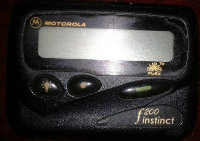Q
Is Mark X equipped with the turbocharger?
The fuel type of the 2005 Toyota Mark X 250 is gasoline, without clear mention of the equipment of turbocharger. Generally, Mark X models are equipped with naturally aspirated engines to deliver smooth power output and enjoyable driving experience. However, as the automotive market evolves, variations exist across different model years and versions. Certain special editions or later upgraded models may employ turbocharging technology to enhance performance such as power and torque, catering to diverse consumer demands. To confirm whether a specific Mark X model is equipped with turbocharger, it's advisable to check the vehicle's detailed technical specifications or consult a Toyota dealership.
Special Disclaimer: This content is published by users and does not represent the views or position of PCauto.
Related Q&A
Q
How much horsepower does a 2005 Toyota Mark X have?
Back in 2005, the Toyota Mark X entered the Malaysian market with two engine options that drew attention from car enthusiasts: the 2.5 - liter 4GR - FSE V6 and the 3.0 - liter 3GR - FSE V6. Where the 2.5L produces around 215 hp, the 3.0L delivers roughly 256 hp – both packing Toyota's advanced direct - injection tech that delivered solid performance with decent fuel economy.
What made the Mark X stand out, though, was that it was a proper rear - wheel - drive sedan from Toyota – a classic, if you will. Car enthusiasts loved it for its smooth driving feel and stable handling, which were well - suited to Malaysia's road conditions and driving demands here.
Styling - wise, it struck a nice balance between sporty and comfortable. Inside, the build quality felt solid, and it came loaded with features: think multi - function steering wheel, a decent sound system – all the little things that make driving more enjoyable.
If you're into this kind of car, it is advisable for you to track one down for a test drive. You should experience that power and how it handles firsthand. And hey, keep an eye on Malaysia’s used car market too – a well - maintained Mark X can be a cost - effective purchase these days.
Q
What is the price of Mark X 2005?
The 2005 Toyota Mark X typically fetches between RM30,000 to RM50,000 on Malaysia's used car market. Of course, the actual price hinges on condition, mileage, modifications, and location. What makes this a standout? That classic FR (front-engine, rear-wheel drive) setup paired with either a 2.5L or 3.0L naturally aspirated V6 engine. Power delivery is smooth, maintenance costs are reasonable, and it's a certified favorite among local car enthusiasts – a true Japanese classic.
Now, considering its age, there are key things to watch for when buying. Give extra attention to the chassis rubber components, check the transmission's condition thoroughly, and make sure there's no history of flood damage. On the plus side, parts for the Mark X are pretty readily available in Malaysia, though some genuine OEM bits might require ordering through specific channels.
If your budget's tight but you still want driver engagement, the same-era Toyota Crown or Nissan Teana are worth a look. However, the Mark X holds its ground with superior modification potential and a sportier aesthetic. For peace of mind, source it through reputable used car platforms or professional dealers, and always insist on a comprehensive inspection report to keep the transaction transparent.
Q
Is the 2005 Toyota Mark X reliable?
In the Malaysian market, the 2005 Toyota Mark X has built a solid reputation for reliability. Under the hood, you'll find either a 2.5-liter or 3.0-liter V6 engine – smooth operators that deliver power in a refined, durable manner. Maintenance costs are pretty reasonable, and spare parts are generally easy to come by, making it a practical choice for local folks looking for a long-term daily driver.
What really sets this car apart is its rear-wheel-drive setup, which translates to a genuinely engaging driving experience. The interior feels well-put-together, with that typical Toyota solidity. Sure, it's not the newest kid on the block, but with proper care, these Mark Xs still hold up and offer a consistently dependable ride.
Now, considering its age, there are a few things to watch out for if you're in the market. When checking one out, pay close attention to the condition of the chassis rubber components, the suspension system, and obviously, the engine. Age-related wear and tear on these parts can definitely put a damper on your daily commute if not addressed.
For Malaysian buyers watching their wallets but still craving that V6, rear-wheel-drive sedan experience, the 2005 Mark X represents some serious bang for your buck. Toyota's strong local presence means there's no shortage of mechanics familiar with these cars, making after-sales service that much smoother. Prices on the used market are pretty approachable too, though – and this is crucial – the actual condition of individual cars can vary wildly. Do yourself a favor and insist on a professional inspection before handing over any cash.
Q
Does Mark X consume lots of fuel?
The fuel consumption of the Mark X cannot be generalized, as it is influenced by various factors. Regarding the vehicle's condition, proper engine maintenance—such as timely spark plug replacement and keeping the intake system clean—typically results in normal fuel efficiency. Conversely, issues like carbon buildup in the engine or underinflated tires may increase consumption.
Driving habits also significantly impact fuel usage. Smooth acceleration, avoiding sudden braking, and maintaining steady speeds help reduce consumption, while aggressive throttle input or high-speed driving will increase the consumption. Road condition is also an important factor, frequent stop-and-go traffic inevitably increases the fuel consumption compared to highway or smooth-road driving.
Therefore, the Mark X may don't consume lots of fuel. With proper maintenance, good driving habits, and appropriate route selection, its fuel consumption can be effectively managed.
Q
What's the transmission fluid capacity of the Toyota Mark X
Sorry, there is no exact information regarding the specific transmission fluid capacity of the Toyota Mark X. The required amount can vary depending on factors such as the vehicle model, transmission type, and design. Generally speaking, there are two common methods for changing transmission fluid: the gravity drain method, which typically requires less fluid, and the exchange machine method, which enables a more thorough fluid replacement but uses more fluid.
For accurate transmission fluid capacity details, I recommend consulting your vehicle's owner's manual, which should contain comprehensive specifications. Alternatively, you could contact an official Toyota dealership - their technicians can provide precise data based on your specific vehicle configuration.
Please note that regular transmission fluid changes are crucial for maintaining optimal transmission performance and longevity. Always follow the manufacturer's recommended service intervals and use the specified fluid grade.
Q
What type of oil does the Toyota Mark X use?
It's recommended to use Toyota Genuine Oil for Toyota Mark X, with specifications including 0W-20, 5W-20, and 5W-30. The 0W-20 is a full synthetic oil that offers excellent low-temperature fluidity, ensuring smoother cold start in frigid climates while improving fuel efficiency. The 5W-20, is also a good choice as the full synthetic oil, providing reliable low-temperature performance and engine protection suitable for most driving conditions. Meanwhile, the 5W-30 is a semi-synthetic oil that performs well across broader climate ranges, delivering stable lubrication and protection under high temperatures.
When selecting engine oil, consider your driving environment and usage purpose. For colder regions, 0W-20 is ideal, while 5W-20 or 5W-30 may be preferable in moderate climates or for high-mileage vehicles. Additionally, high-quality third-party oils that meet the engine's requirements can also serve as viable alternatives.
Q
How many airbags is Mark X equipped with?
Sorry, there is no specific information about the number of airbags equipped by the Mark X. Airbags are one of the important safety features in vehicles,which can pop out quickly during a collision, providing cushioning protection for occupants and reducing the risk of injury. The number of airbags varies across models of different years, versions, and trim levels. Generally, common automotive airbags include front airbags for the driver and front passenger, side airbags to mitigate injury during side impacts, and some models feature curtain airbags to protect front and rear occupants' heads. For precise information about the number of the Mark X's airbag, please refer to the vehicle's owner's manual or consult a Toyota dealer.
Q
Is Mark X equipped with V6 engine?
The Mark X is equipped with V6 engine. Some versions of the Toyota Mark X are equipped with V6 engine, such as those featuring the 5GR-FE, 3GR-FE, and 4GR-FSE engine codes. The V6 engine delivers robust power, enhancing the driving experience. Its structural design ensures smoother operation compared to some four-cylinder engines, showing more smooth power delivery. Additionally, V6 engine offers strong performance reserves, making it well-suited for both city driving and highway overtaking.
Different V6 engines vary in power and torque specifications, so it's recommended that buyers should choose the Mark X model that meets their performance needs and preferences.
Q
What's the fuel tank capacity of the Mark X?
There is no exact data about the fuel tank capacity of the Mark X. The fuel tank capacity may vary across different model years and versions. Generally, a vehicle's fuel tank capacity is clearly specified in the owner's manual or technical specifications. You may consult the owner's manual for your specific model to obtain precise figures. Understanding fuel tank capacity is crucial as it directly impacts the vehicle's driving range, enabling owners to better plan journeys and schedule refueling. Furthermore, factors such as driving habits and vehicle load conditions can also influence the actual distance achievable on a full tank.
Q
Does the Toyota Mark X use a timing belt or timing chain?
The Toyota Mark X utilizes a timing chain. The primary function of the timing chain is to ensure the engine's intake and exhaust valves open and close at the right moments, maintaining proper cylinder breathing. Compared to timing belts, timing chains offer has several advantages - they have significantly longer service life, often lasting the vehicle's lifetime without replacement, reducing maintenance frequency and saving owners considerable upkeep costs. Additionally, timing chains show superior reliability with minimal risk of sudden failure, substantially decreasing the chance of breakdowns caused by timing system malfunctions.
However, timing chains do have some drawbacks, including noticeably loud noise during rotation and greater mechanical resistance, which may marginally increase fuel consumption and affect vehicle's performance. Overall, the Toyota Mark X's timing chain design improves the engine's long-term durability and consistent operation.
Popular Cars
Model Year
Car Compare
Car Photo
Latest Q&A
Q
How reliable is a 2019 Porsche Macan?
The 2019 Porsche Macan delivers solid reliability, thanks to its proven 2.0T or 3.0T engines that offer consistent power delivery. The PDK dual-clutch transmission is another strong point—it’s both durable and buttery-smooth.
Porsche’s sporty DNA shines through in the Macan’s chassis tuning and all-wheel-drive system, yet it doesn’t compromise everyday comfort. Owner feedback suggests that sticking to the factory maintenance schedule keeps most examples running trouble-free, though be prepared for higher upkeep costs (as with any luxury vehicle).
Its strong resale value speaks volumes about its reputation for dependability. If you’re after driving thrills without sacrificing SUV practicality, the 2019 Macan is a compelling pick. Just be sure to get a pre-purchase inspection and verify full service history—it’ll pay off in the long run.
Q
How much is a 2019 Porsche worth?
The value of a 2019 Porsche depends on the model, mileage, condition, and specs. Take the popular Cayenne, for example—used ones typically go for between RM300k to RM500k. A 911 Carrera might range from RM500k to RM800k, while an entry-level 718 Boxster or Cayman could be around RM250k to RM400k. For luxury sedans like the Panamera, expect prices between RM350k to RM600k, but always check the actual condition and option list.
Porsches hold their value well, especially limited editions or high-performance GT models, but maintenance costs and service history play a big role in resale pricing. If you're buying, stick to official certified pre-owned channels or get a professional inspection. Always verify warranty transfers and repair records.
Pro tip: Compare listings on local used-car platforms and check recent sales data—market demand and inventory fluctuations affect pricing. Also, factory options (like sport packages or premium audio) can boost resale value, while accident history or multiple owners might slash the price by 10-20%.
Q
Does the 2019 Macan have a good sound system?
The 2019 Porsche Macan delivers an impressive audio performance, particularly with the optional Bose® Surround Sound System or the top-tier Burmester® High-End Surround Sound System—both offering an immersive listening experience.
The Bose® setup packs 14 speakers with 665 watts of total power, delivering crisp audio and punchy bass perfect for pop and electronic music. Meanwhile, the Burmester® system steps it up with 16 speakers and 1,000 watts, creating a wider soundstage and superior detail reproduction—ideal for classical or high-resolution tracks.
Both systems integrate seamlessly with Porsche’s standard Communication Management (PCM), supporting Apple CarPlay and multiple audio sources. If sound quality is a priority, be sure to specify your audio preference at purchase—the base model only comes with a standard speaker setup.
For the best performance, play lossless files via USB or high-quality Bluetooth codecs, and keep the system firmware updated for optimal operation.
Q
What is the resale value of a 2019 Macan?
The resale value of a 2019 Porsche Macan depends on factors like condition, mileage, specs, and service history. Current used prices hover between RM250k to RM350k, with higher trims commanding premium prices. As Porsche's entry SUV, the Macan holds its value better than most rivals thanks to brand prestige and sporty DNA – especially models optioned with Sport Chrono or full leather interiors fetching stronger money.
Pro tip: Get a pre-sale inspection and organize your maintenance paperwork – this really helps maximize resale. Macans move quickly in our local used market, with 3-5 year-old examples being the sweet spot when depreciation levels off. If you're upgrading, consider Porsche Approved Certified pre-owned – you'll pay a slight premium over private sales, but the extended warranty and factory refurbishment save headaches down the road.
Q
Is a 2019 Porsche Macan a good car?
The 2019 Porsche Macan is a well-rounded luxury SUV that stays true to Porsche's performance DNA while delivering everyday practicality. It comes with your choice of a peppy 2.0T or more powerful 3.0T engine, paired with Porsche's brilliant 7-speed PDK transmission that shifts like butter. The chassis strikes that sweet spot between sporty handling and comfortable cruising - perfect for both city commutes and weekend backroad blasts.
Inside, you'll find Porsche's typical top-notch craftsmanship with a standard 10.9-inch touchscreen featuring Apple CarPlay. Just don't expect limo-like rear legroom. These things hold their value surprisingly well, though maintenance will cost you more than your average SUV - but then again, you get Porsche's excellent service network.
Among its competitors, the Macan stands out for its driver engagement. If you want more grunt, step up to the Macan S or GTS. One pro tip: if you're shopping used, pay special attention to the PDK's condition and inspect the suspension components. Always better to go through Porsche's certified pre-owned program for that extended warranty peace of mind.
View MoreRelated News

Toyota unveils the new Corolla at the Auto Guangzhou in China. What changes will the future Corolla have?
AshleyNov 25, 2025

Why is the facelifted GR Yaris considered the finished product?
AshleyNov 21, 2025

Toyota is developing two new Land Cruiser models, will Land Cruiser become an independent brand in the future?
JamesNov 20, 2025

Toyota Supra (A90) will be discontinued next March, and the next generation model may be led by Toyota.
JohnNov 14, 2025

Which one is better, Honda City or Toyota Vios?
AshleyNov 11, 2025
View More


















Pros
Cons